Description
Product Overview
Melanotan II is a high-purity, synthetic cyclic heptapeptide designed as an analog of the naturally occurring alpha-melanocyte-stimulating hormone (α-MSH), a peptide hormone produced in the pituitary gland. Originally developed in the 1980s at the University of Arizona, Melanotan II was created to stimulate melanin production in the skin, enabling a photoprotective tan without extensive ultraviolet (UV) exposure. Beyond its tanning properties, research has revealed its potential effects on sexual function, appetite regulation, neuroprotection, and metabolic processes. This product is supplied as a lyophilized powder in a 10 mg sterile, multi-use vial and is strictly intended for laboratory research purposes. It is not approved for human consumption, diagnostic, or therapeutic use by regulatory bodies such as the FDA, TGA, or MHRA.
Chemical and Physical Properties
- Chemical Name: N-Acetyl-norleucyl-cyclo(aspartyl-histidyl-D-phenylalanyl-arginyl-tryptophyl-lysine)-amide acetate
- Molecular Formula: C50H69N15O9
- Molecular Weight: 1024.198 g/mol
- CAS Number: 121062-08-6
- Peptide Sequence: Ac-Nle-c[Asp-His-D-Phe-Arg-Trp-Lys]-NH2 (amide bond between Asp5 and Lys10)
- Appearance: White to off-white lyophilized powder
- Purity: ≥99% (verified by high-performance liquid chromatography [HPLC] and mass spectrometry)
- Solubility: Soluble in sterile water or bacteriostatic water; insoluble in ethanol, neutral solvents, or oils
- pH (Reconstituted): Neutral to slightly acidic (pH 6.5–7.5)
- Synthesis Method: Solid-phase peptide synthesis with carbodiimide-mediated lactamization, achieving high purity (>90%) without preparative chromatography
Melanotan II is a non-selective agonist of melanocortin receptors (MC1R, MC3R, MC4R, and MC5R), which are G protein-coupled receptors involved in pigmentation, energy homeostasis, sexual function, and immune modulation. Its cyclic structure, formed by a lactam bridge between aspartic acid and lysine, enhances stability and receptor-binding affinity compared to linear α-MSH.
Mechanism of Action
Melanotan II interacts with multiple melanocortin receptors, eliciting diverse physiological responses in research models:
- MC1R (Melanocortin-1 Receptor): Expressed in melanocytes, it stimulates eumelanin production, leading to skin and hair darkening. This provides photoprotection against UV-induced DNA damage.
- MC3R and MC4R: Found in the central nervous system and peripheral tissues, these receptors mediate sexual arousal, appetite suppression, and energy expenditure. MC4R activation is particularly linked to penile erections and libido enhancement.
- MC5R: Expressed in exocrine glands, it may influence sebaceous gland activity and pheromone production, though its role is less studied.
Intended Applications
Melanotan II is a versatile peptide for laboratory and animal studies, with applications in the following areas:
- Melanogenesis and Photoprotection:
- Stimulates eumelanin production, resulting in a dose-dependent darkening of skin and hair in animal models.
- Effective across all Fitzpatrick skin types, with pronounced effects in types I and II (fair skin, high UV sensitivity).
- Reduces UV-induced skin damage in research models, potentially lowering the risk of photocarcinogenesis (though not a substitute for sunscreen in practical applications).
- Studies, such as Dorr et al. (1996), demonstrated significant tanning in human volunteers at doses of 0.08–0.21 mg/kg/day over 10 days.
- Sexual Function and Behavior:
- Induces spontaneous penile erections in male subjects with psychogenic erectile dysfunction (ED). Wessells et al. (2000) reported that 8 out of 10 men experienced erections with >80% tip rigidity for 38 minutes (vs. 3 minutes with placebo) at doses of 0.025 mg/kg.
- Enhances sexual arousal and libido in both male and female models, potentially via MC4R activation in hypothalamic and limbic regions.
- Influences social behaviors, such as partner preference in female prairie voles and reduced play-fighting in male neonatal voles, suggesting applications in behavioral neuroscience.
- Metabolic and Appetite Regulation:
- Suppresses appetite and reduces food intake via MC4R activation in the hypothalamus. Studies in MC4R knockout rats showed increased obesity, while Melanotan II administration reduced food intake and body weight.
- Enhances glucose uptake in skeletal muscle, brown adipose tissue, and heart tissue when administered in the ventromedial hypothalamus of rats.
- Synergizes with naltrexone to reduce binge-like ethanol consumption in mice, indicating potential in studying impulse control and addiction.
- Neuroprotection and Neurological Effects:
- Promotes peripheral nerve regeneration in rat models, suggesting applications in neurodegenerative research.
- Exhibits neuroprotective properties, potentially via MC4R-mediated anti-inflammatory pathways.
- In maternal immune activation mouse models of autism spectrum disorder (ASD), Melanotan II reversed autistic-like behaviors, possibly through oxytocin signaling.
- Cardiovascular and Renal Effects:
- May induce transient sympathomimetic effects (e.g., increased heart rate, blood pressure) in high doses, requiring careful monitoring in cardiovascular studies.
- Case reports have linked high doses to renal infarction and dysfunction, highlighting the need for controlled dosing in research.
Dosage and Administration
- Reconstitution:
- Reconstitute the 10 mg lyophilized powder with 1–3 mL of bacteriostatic water (0.9% benzyl alcohol) to achieve a concentration of 3.33 mg/mL (3,333 mcg/mL) with 3 mL or 5 mg/mL (5,000 mcg/mL) with 2 mL.
- Gently swirl the vial to dissolve; avoid shaking to prevent peptide degradation.
- Use a sterile insulin syringe (e.g., 30-unit or 50-unit, 0.3–0.5 mL capacity) for accurate microgram dosing.
- Dosage Guidelines:
- Starting Dose: 250–500 mcg (0.25–0.5 mg) daily via subcutaneous injection to assess tolerance and minimize side effects (e.g., nausea, flushing).
- Titration: After 2–4 days, increase to 500–750 mcg daily if tolerated. Maximum recommended dose is 1 mg daily for subjects around 100 kg (0.01 mg/kg).
- Tanning Protocol: Administer daily or every other day until desired pigmentation is achieved (typically 1–2 weeks). Maintenance doses of 500 mcg 1–2 times per week may sustain effects.
- Sexual Function Studies: Single doses of 0.025 mg/kg have been effective in inducing erections within 1–5 hours in male subjects.
- Administration:
- Inject subcutaneously into fatty tissue (e.g., abdomen, thigh, or upper arm) at a 45–90° angle using a 29–31-gauge insulin needle.
- Rotate injection sites to prevent tissue irritation.
- Clean the vial stopper and injection site with alcohol swabs to maintain sterility.
- Administer in a controlled laboratory setting with proper ethical oversight.
- Storage:
- Lyophilized Powder: Store at -20°C in a freezer for up to 12–24 months. Stable for shipping at ambient temperatures for up to 2 weeks.
- Reconstituted Solution: Refrigerate at 2–8°C and use within 30 days. Do not freeze reconstituted solution, as it may degrade the peptide.
- Protect from light and avoid repeated freeze-thaw cycles.
Side Effects
Melanotan II’s broad receptor activity may lead to the following side effects in research subjects:
- Immediate (Within Hours):
- Nausea (most common, dose-dependent, typically subsides after 2–3 days).
- Facial flushing and warmth.
- Yawning and stretching (MC4R-mediated, linked to arousal pathways).
- Spontaneous penile erections (priapism) in males, lasting 1–5 hours.
- Decreased appetite, potentially lasting 4–12 hours.
- Mild abdominal cramps, dizziness, or lethargy.
- Short-Term (Days to Weeks):
- Darkening of pre-existing moles and freckles.
- Appearance of new melanocytic naevi, which may regress post-treatment.
- Increased libido and sexual arousal in both sexes.
- Long-Term Concerns:
- Melanoma Risk: Case reports (e.g., Hjuler & Lorentzen, 2014) suggest a potential link to melanoma due to rapid melanocyte proliferation, especially with UV exposure. Long-term studies are lacking.
- Systemic Toxicity: High doses (e.g., 6 mg) have been associated with rhabdomyolysis, renal infarction, and renal dysfunction in case studies.
- Neurological Effects: Rare instances of posterior reversible encephalopathy syndrome (PRES), presenting with seizures, visual disturbances, confusion, headache, and vomiting.
- Cardiovascular Effects: Sympathomimetic symptoms, including anxiety, sweating, chest pain, and elevated blood pressure, particularly at doses >1 mg.
- Contraindications:
- Avoid in subjects with a history of melanoma, bleeding disorders, uncontrolled hypertension, or severe depression.
- Not suitable for pregnant or breastfeeding subjects due to insufficient safety data.
- Caution in subjects with renal or hepatic impairment, as metabolism occurs primarily in the kidneys and liver.
Safety and Regulatory Information
- Regulatory Status: Melanotan II is not approved for human use by any major regulatory authority (e.g., FDA, TGA, MHRA). It is classified as a research chemical and is available only for in vitro and animal studies.
- Quality Concerns:
- Unregulated products sold online (e.g., nasal sprays, oral forms, pre-mixed solutions) are often impure or inactive, as Melanotan II is degraded by gastric enzymes if ingested.
- Microbial contamination is a risk with non-sterile or improperly stored products.
- Only purchase from suppliers providing certificates of analysis (CoA) with HPLC and mass spectrometry data confirming ≥99% purity.
- Ethical Use:
- Researchers must comply with institutional review board (IRB) or ethics committee guidelines.
- Use is restricted to controlled laboratory settings with appropriate oversight.
- Misuse for personal tanning or bodybuilding purposes is strongly discouraged due to health risks.
Practical Considerations for Research
- Skin Type Suitability: Most effective in Fitzpatrick skin types I and II (fair skin, prone to burning). Subjects with high pheomelanin (e.g., red hair) may show variable tanning responses due to MC1R polymorphisms.
- UV Exposure: Controlled UV exposure (e.g., UVB lamps or natural sunlight) enhances melanogenesis but must be carefully monitored to avoid DNA damage. Melanotan II does not replace sunscreen or UV-protective measures.
- Melanoma Risk: While Melanotan II reduces UV-induced damage in some models, its role in melanoma development is controversial. Researchers should monitor skin changes and avoid excessive UV exposure.
- Combination Therapies: Synergistic effects with naltrexone or oxytocin analogs may be explored in addiction or behavioral studies, but require careful dosing to avoid receptor overstimulation.
Packaging
- Presentation: 10 mg lyophilized powder in a sterile, multi-use glass vial with a rubber stopper and aluminum seal.
- Packaging Details: Vials are sealed under vacuum or inert gas to prevent oxidation. Each vial is labeled with batch number, expiration date, and storage instructions.
- Shipping: Lyophilized Melanotan II is stable at ambient temperatures for up to 2 weeks, making standard-cold shipping unnecessary. However, refrigeration upon receipt is recommended to maintain potency.
- Batch Testing: Request CoA and microbial testing results from suppliers to ensure sterility and absence of endotoxins.
Storage and Handling
- Lyophilized Powder:
- Store at -20°C in a freezer for long-term stability (12–24 months).
- Stable at room temperature (15–25°C) for up to 30 days during shipping or short-term storage.
- Protect from light and moisture to prevent degradation.
- Reconstituted Solution:
- Store at 2–8°C in a refrigerator and use within 30 days.
- Discard if solution appears cloudy or discolored, indicating contamination or degradation.
- Avoid freezing reconstituted solution, as it may denature the peptide.
- Handling Precautions:
- Use sterile gloves and equipment to prevent contamination.
- Avoid exposure to heat, direct sunlight, or oxidizing agents.
- Dispose of unused peptide and vials according to local biohazard regulations.
Disclaimer
Melanotan II is supplied solely for laboratory research purposes and is not intended for human use, consumption, or medical applications. Researchers are responsible for ensuring compliance with local regulations, ethical guidelines, and safety protocols. Improper use or sourcing from unregulated vendors may result in serious health risks, including contamination, mislabeling, or adverse effects. Always verify product authenticity and purity through independent laboratory testing.

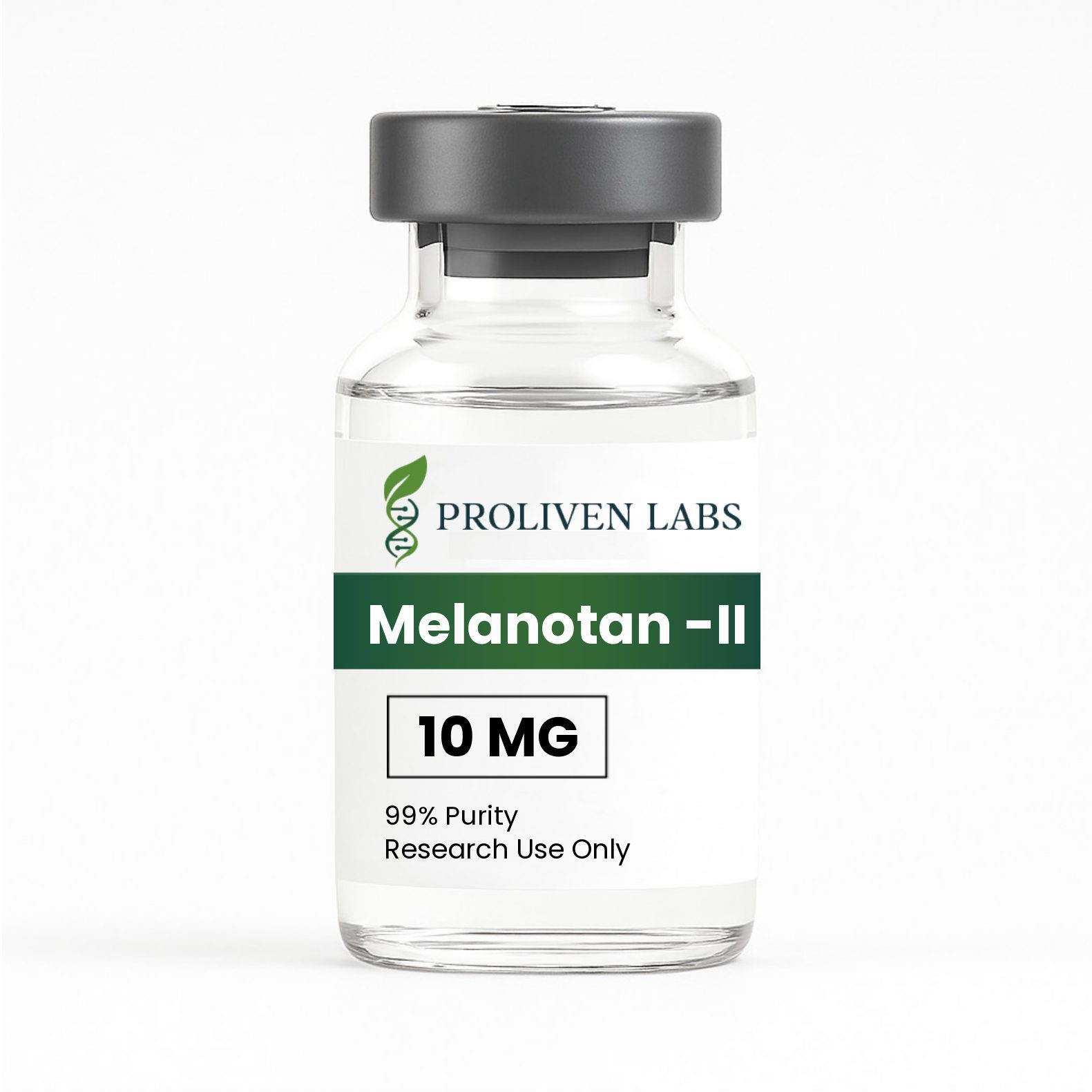
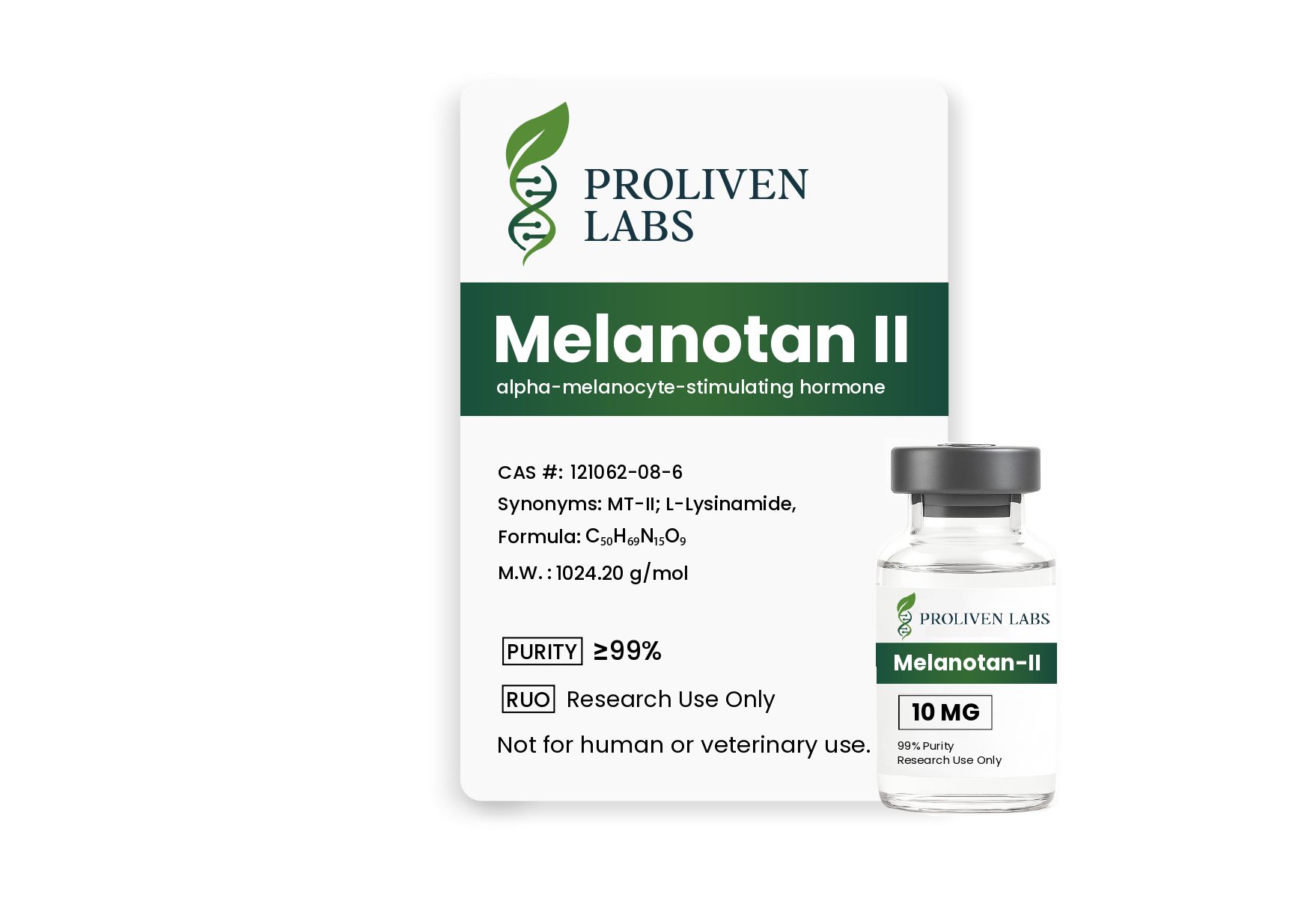

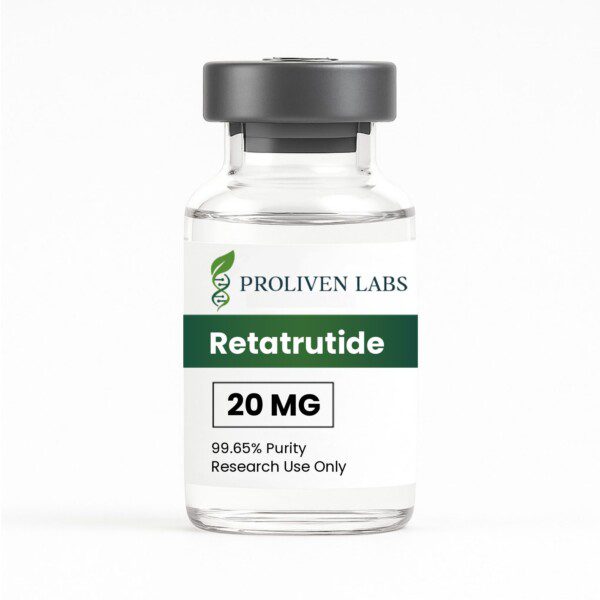
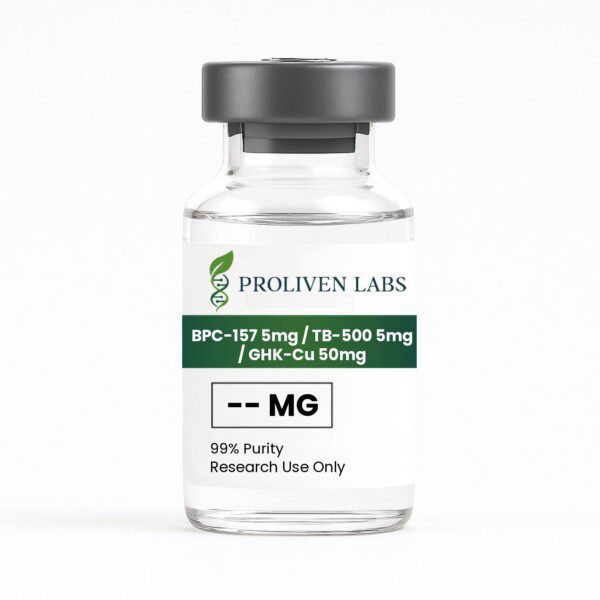
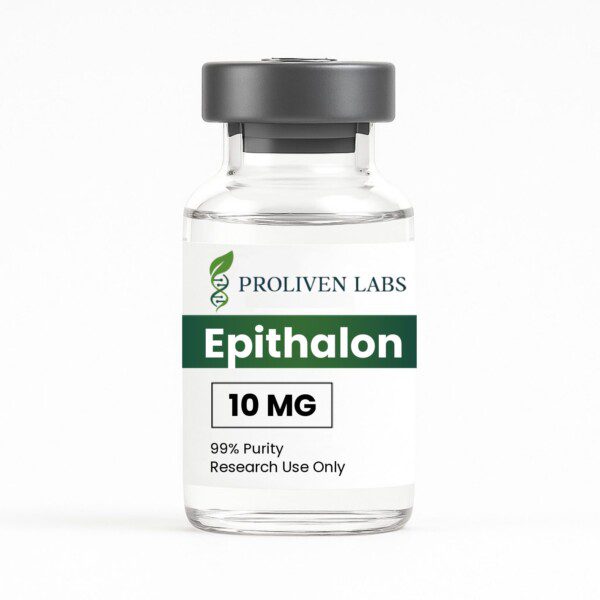
Reviews
There are no reviews yet.